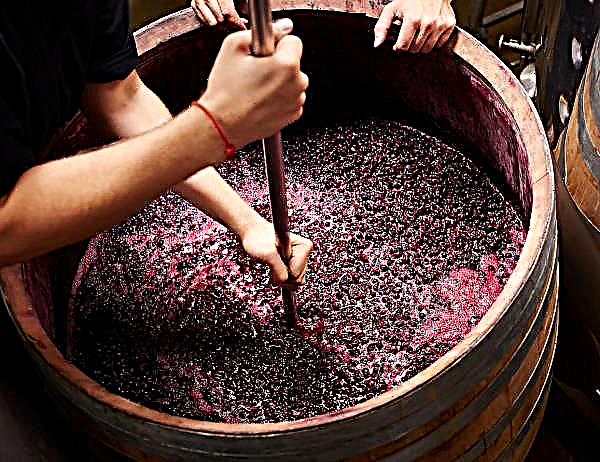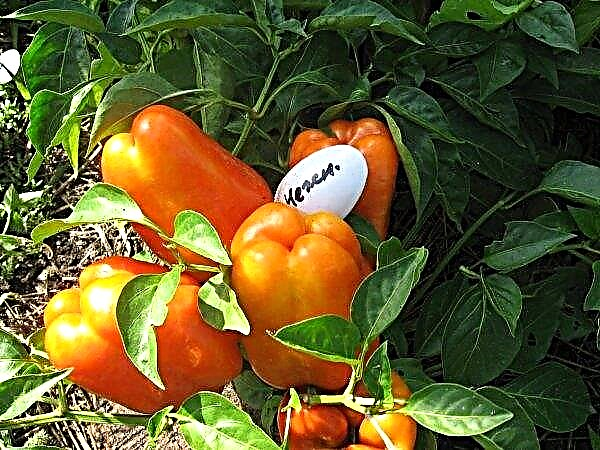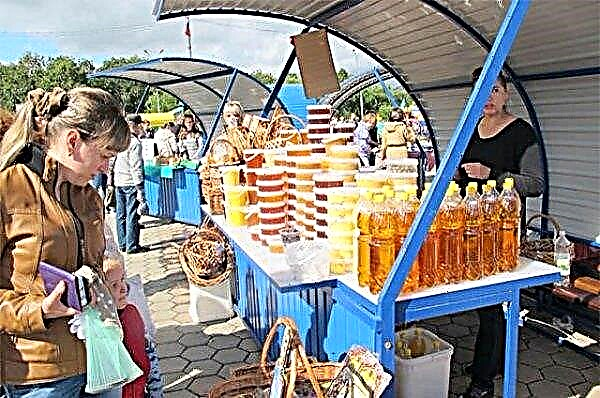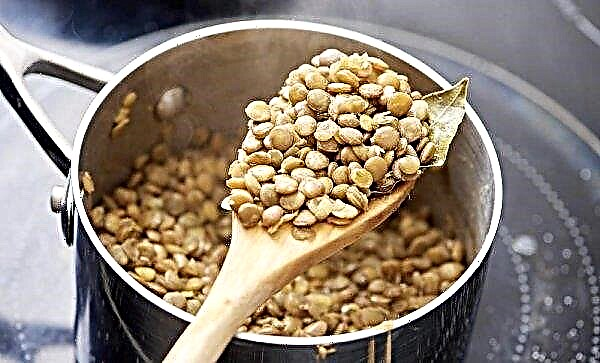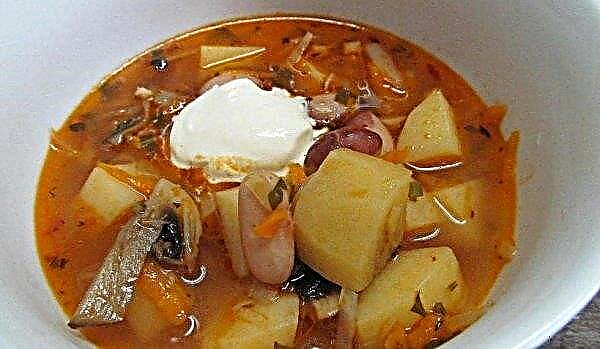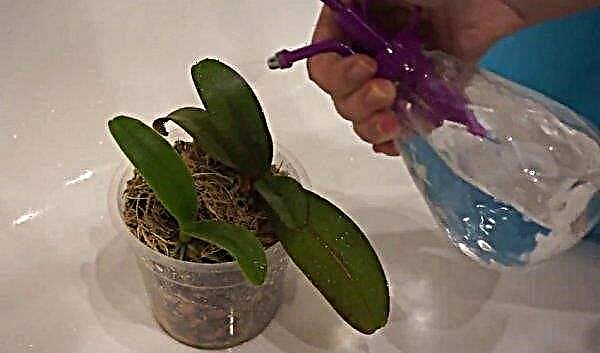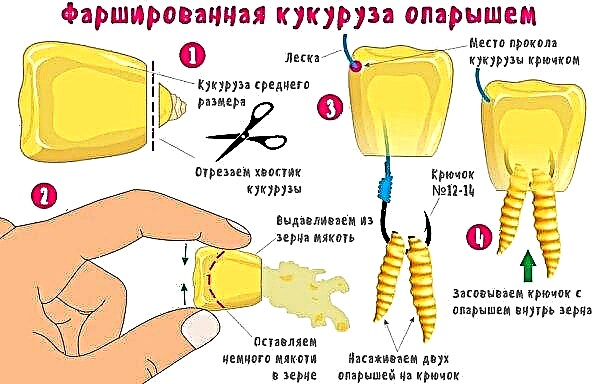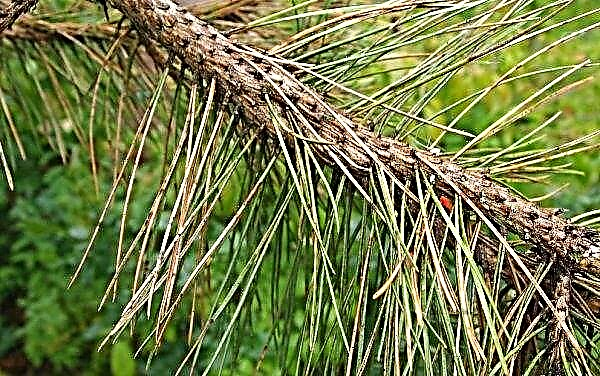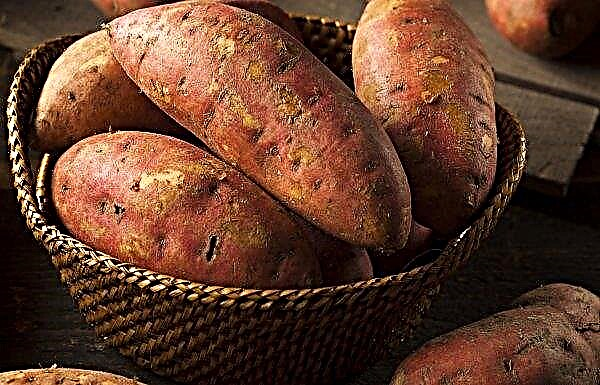Now many gooseberry varieties are bred and new ones continue to appear. At the same time, gardeners grow not only new products, but also “old”, proven varieties. Gooseberry variety Pink 2 is more than half a century old, but it continues to be successfully grown in many gardens.
Variety description Pink 2
Gooseberry Pink 2 is a mid-early variety with red large fruits and is rarely sold.

Grade history
The breeding ground for the gooseberry variety Pink 2 is the Moscow fruit and berry experimental station. It was bred by domestic breeders as far back as 1963 on the basis of varieties Finik and Seedling Lefora, and in 1971 it was entered in the State Register. The variety is zoned in the Central and East Siberian regions of the Russian Federation. It can be grown not only in home gardens, but also on an industrial scale.
Appearance, characteristics of berries, ripening time, yield
Gooseberry Pink 2 forms a thick semi-spreading bush of medium size. Fruits on the branches of two and three years of age, the beginning of fruiting is the second decade of June. Young shoots are erect and thick, green. Over time, they become stiff and covered with light gray bark. Judging by the description, the branches of this gooseberry variety are slightly prickly. The bush is weakly and evenly covered with thin long spikes of dark color.

Slightly wrinkled leaves have a three-lobed shape and a green color with gloss. Blossoms with brushes for 1-2 flowers of light green with a pink border, the petals are bent to a large cup. The fruits grow large, with an average weight of about 5.5 g, but sometimes they reach 10 g. They have a pink-red color, which becomes darker during full maturity. Berries have a dense skin with a light wax coating and large seeds. The fruits have an excellent sweet and sour taste - 4.9-5.0 points on a five-point scale.
3-4 kg of fruits are collected from the bush, but 5 kg can also be removed. In industrial plantings, the yield is 10-12 tons per 1 hectare. The variety has medium winter hardiness and excellent tolerance to winter temperature differences. It is resistant to major diseases of the culture (powdery mildew, anthracnose and septoria).
Did you know? In 100 g of gooseberry cultivar Pink 2 there are 16 mg of vitamin C and 10 mg of P-active substances, which makes its use an excellent prevention of diseases of the cardiovascular system.
Advantages and disadvantages of the variety
- A gardener variety may be interested in the following characteristics:
- high self-fertility;
- stable crops;
- large-fruited;
- resistance to common diseases;
- excellent portability and keeping quality;
- great dessert flavor;
- good winter hardiness;
- universality of use.
- The variety has the following disadvantages:
- the need for fertile soil and fertilizing;
- difficult reproduction.
Features of agricultural technology
Gooseberry variety Pink 2 requires mandatory fertilizer, but generally has a typical agricultural technology.
Important! Good predecessors for gooseberries are vegetables, cereals and green manure, and the worst are gooseberries and currants. Excellent neighbors for the crop will be tomatoes and spices with a strong, repelling pest odor (mint, garlic, dill).
Seat selection
This culture can tolerate light shading, but it should not be placed in the aisles of the garden. For these berry bushes, it is better to choose a raised or flat area. The groundwater level should not be closer than 1 m. If they are close, then landing can be done on an embankment hill up to 0.5 m high and 1 m wide.
 For gooseberry variety Pink 2, you should choose a well-lit place, protected from cold winds.
For gooseberry variety Pink 2, you should choose a well-lit place, protected from cold winds.
This gooseberry variety prefers fertile loose soils with a neutral or slightly acidic reaction up to 5.5 pH. Acidic soil should be deoxidized with lime or dolomite flour.
Planting and care, pollination
Gooseberry seedlings are planted in spring or autumn. Experienced specialists recommend planting from late September to the second half of October, as plant survival will be better. The landing area is dug up, cleaning from weed grass, and then leveled with a rake.
Important! For planting, healthy seedlings 1-2 years old with a root system 0.22-0.3 m long are selected. This varietal variety should be purchased only from well-established sellers.
In autumn, pits are prepared for planting seedlings 2-3 weeks before the process. The dimensions of the recess are 0.5 × 0.5 m. The excavated soil is mixed with 10 kg of humus, 50 g of potassium sulfate, 50 superphosphate. Gooseberry bushes are placed with an interval of 1-1.5 m in a row and with an interval in the row spacing of at least 1.5 m.
It is necessary to deepen the root neck shallow (5-6 mm below the ground level). After planting, irrigation is carried out at the rate of - 1 bucket of water for 1 seedling. It is recommended to immediately mulch the earth with humus, compost or peat (layer 3 cm thick). Such a cover will well protect the earth from drying out and growth of weed grass. After planting, the shoots of the plant are cut, leaving a length of 5-6 buds.
 Planting material is planted directly or with a slight slope, filling the pit with prepared nutrient soil mixture.
Planting material is planted directly or with a slight slope, filling the pit with prepared nutrient soil mixture.
In the future, it is necessary to ensure moistening of the landing. Watering should be carried out under the root and use non-cold water for this. For the entire season, it is necessary to carry out 3-5 watering. If the summer is dry and hot, you can water more often. Grade Pink 2 needs nutritious soils. Therefore, fertilizing should be carried out regularly.
Fertilizers are used at least three times per season:
- In the spring Under the plant, 1/2 bucket of humus is added, as well as 50 g of superphosphate, 25 g of ammonium sulfate, 25 g of potassium sulfate. For older and overgrown bushes, the norm is increased by about 2 times. Fertilizers are applied evenly to the soil.
- After flowering top dressing with infusion of manure (1: 5). Under each copy is 5-10 liters (depending on age and size).
- After 2-3 weeks feeding using infusion of manure is repeated.
The variety is self-fertile and does not need pollinators. It can be grown in a single planting.

Pest and Disease Control
Gooseberry Pink 2 is resistant to diseases such as powdery mildew, anthracnose and septoria. In case of violation of agricultural cultivation techniques, as well as established rainy weather, the appearance of fungal diseases is possible. To combat them, they are treated with a Bordeaux mixture or with chemical preparations of the "HOM" type.
When viral diseases appear (mosaic) the affected bush should be dug up and disposed of (burned) so as not to infect other plant crops. Dry, hot weather in summer can trigger a variety of insect pests - aphids, butterflies, fire-flies and others.Did you know? When powdery mildew (sferoteka) was introduced at the beginning of the 20th century, gooseberry cultivation ceased for a long time in Russia until varieties resistant to it were bred. For this, hybrids of American species began to be bred.
 To combat them, insecticides are used: Actellik, Karbofos and Fufanon.
To combat them, insecticides are used: Actellik, Karbofos and Fufanon.
During the fruiting period, they should not be used. It is better to use folk remedies - tobacco-soap or garlic solutions.
To prevent the occurrence of diseases, carry out the following activities:
- Fallen leaves and fruits, weeds are harvested.
- In the spring, after the snow melts, the soil under the bush is covered with pieces of roofing material, sprinkling the edges with earth. This coating is removed after flowering. This procedure will prevent the appearance of harmful insects overwintered in the soil.
- In the fall, the hills are grown to a height of 10 cm.
- Preventive treatments. From fungal diseases, they are sprayed before flowering and after picking berries with a Bordeaux mixture. To prevent the occurrence of pests before and after flowering, treatments are carried out. “Bicol” or “Lepidocide”.
Trimming and shaping a bush
To avoid excessive thickening, it is necessary to trim and form a bush. This process is carried out in the spring before the kidneys open. During the forming pruning, 3-5 strong branches are left each year, which are located “evenly” with respect to the base of the bush, and all other shoots are removed. The bush after the formation process should have 16–20 shoots of different ages.
 In the autumn after leaf fall, all branches that are older than 7-8 years are cut.
In the autumn after leaf fall, all branches that are older than 7-8 years are cut.
They can be determined by the darker color and curvature of the shoots with the tops down, the weak presence of berries. Too lowered branches should be cut above the kidney, which has an upward direction. If there is a healthy shoot on such a branch, then shortening is carried out to its length. The tops of the branches, when small berries begin to form on them, it is advisable to shorten. To obtain the largest possible fruits, you can trim the excess green shoots in early summer.
Did you know? Gooseberries contain serotonin, which improves mood and prevents the appearance of tumors. Anthocyanins, which are found in red fruits, have anti-cancer properties.
Wintering
Gooseberry Pink 2 has a fairly high winter hardiness. In areas with a temperate climate, it is enough to mulch the soil with a layer of 10 cm to protect the root system from frost. As mulch, humus or peat is suitable. After the snow falls under the bushes, you need to form a snowdrift. If winter is not snowy, then agrofibre is used for warming. In areas with severe winters, the bushes are bent closer to the soil, plywood shields are installed around, and then covered with dry leaves, covered with burlap on top.
 With the advent of warming in the spring, such insulation is removed so that the bush does not begin to rot.
With the advent of warming in the spring, such insulation is removed so that the bush does not begin to rot.
Harvesting and transportation
Bushes of this gooseberry bear fruit for 3-4 years after planting seedlings. The fruit collection period depends on how they are used, and occurs at different stages of maturity. For fresh consumption of gooseberries, it is removed from the bush at the stage of full ripening - when the fruits are softer and sweeter, painted in dark red. Harvesting is carried out on a dry and clear day.
Important! Since the bushes have a few, but long spikes, the hands must be protected with gloves and long-sleeved clothing made of thick fabric.
From the fruits of gooseberry Pink 2, a delicious wine is obtained, which in its quality is close to grape wine, and a great workpiece taste (jam, jam, confiture). These berries have a dense skin, so they tolerate transportation well. Fresh they are stored on the shelf of the refrigerator for no more than 5 days. Fruits picked at the stage of technical ripeness are stored longer - 10 days. For longer storage, they can be frozen. Frozen berries are stored up to 6 months.
 To make jam, the berries are picked at the stage of technical ripeness, when they are still dense, but have already acquired a characteristic pinkish-red color.
To make jam, the berries are picked at the stage of technical ripeness, when they are still dense, but have already acquired a characteristic pinkish-red color.
Gooseberry variety Pink 2 has a dessert flavor and universal purpose, gives stable yields of large red fruits of early maturity. It is demanding on the fertility of the soil in which it is cultivated, so the culture must be fed and fertilized in a timely manner.


